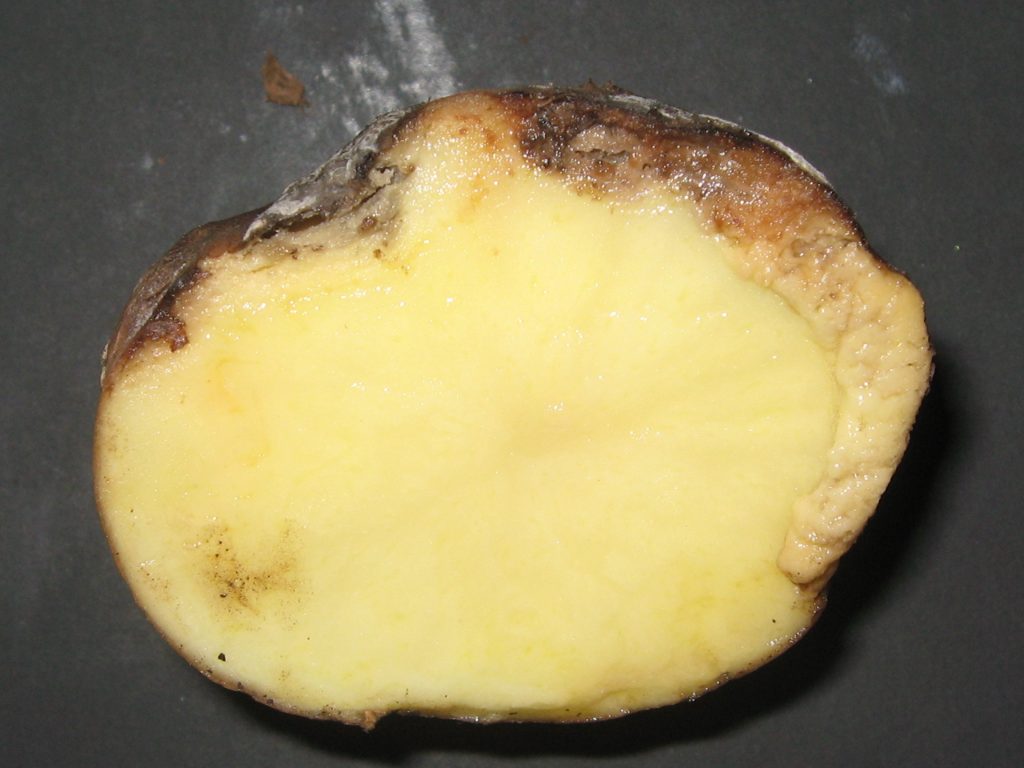Credits:Biovision-Infonet

(c) A.A. Seif

(c) A.A. Seif, icipe
Bacterial wilt can be very destructive at the lower altitude, warmer extreme of the potato’s range in Kenya. This disease causes rapid wilting and death of the entire plant without any yellowing or spotting of leaves. All branches wilt at about the same time. The pathogen is transmitted through tuber seed into the soil. Also infested soil can be important source of disease inoculum (infection).
What to do:
- Use clean certified disease-free seed.
- Plant resistant varieties where available.
- Remove wilted plants to reduce spread of the disease from plant to plant.
- Bio-fumigation (incorporating especially mustard or radish plants in large amounts into the soil immediately before planting potatoes) helps in reducing and the long-term elimination of bacterial wilt from the soil. This practice is reported to reduce incidence of bacterial wilt by 50 to 70% in the Philippines (ACIAR 2005/6).
- Do not grow crops belonging to the same family as potatoes (e.g. tomatoes, peppers or eggplant) in succession in the same land. Rotation is not effective against bacterial wilt because the pathogen can survive for several years in the soil and also can infect a wide range of crops and weeds. However, the disease incidence can be reduced if crop rotation with non-susceptible crops (e.g. cereals) is combined with the other above-mentioned control components.